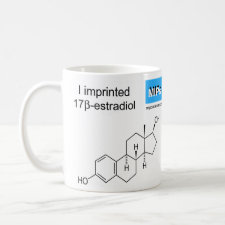
Authors: Yang Q, Wang Y, Wang GX, Gao JF, Zhao X, Liu DJ, Mi HF
Article Title: Using molecularly imprinted polymer for protecting functional group in organic reaction.
Publication date: 2013
Journal: Journal of Applied Polymer Science
Volume: 130
Issue: (1)
Page numbers: 595-602.
DOI: 10.1002/app.39199
Abstract: In this study, a novel method of selective protecting group based on molecularly imprinted polymer for regioselective organic reaction is reported. The simplicity, convenience and feasibility of this method may be illustrated by the protection of hydroxyl group at C17 or C3 of β-estradiol in the reaction between β-estradiol and diphenylphosphinic chloride. Polymers to protect hydroxyl group at C17 or at C3, both demonstrated excellent protection effect. In polymers imprinted with 2-methyl-cyclopentanol template to protect hydroxyl group at C17, the proportion of 3-phosphate was almost as high as 100%. In molecularly imprinted polymer synthesized using 5,6,7,8-Tetrahydro-2-naphthol as a template to protect hydroxyl group at C3, the proportion of 17-phosphate reached 98.2%. -® 2013 Wiley Periodicals, Inc. J. Appl. Polym. Sci., 2013
Template and target information: 2-methyl-cyclopentanol, 5,6,7,8-Tetrahydro-2-naphthol, β-estradiol
Author keywords: separation techniques, recycling, molecular recognition, functionalization of polymers, adsorption



Join the Society for Molecular Imprinting

New items RSS feed
Sign-up for e-mail updates:
Choose between receiving an occasional newsletter or more frequent e-mail alerts.
Click here to go to the sign-up page.
Is your name elemental or peptidic? Enter your name and find out by clicking either of the buttons below!
Other products you may like:
 MIPdatabase
MIPdatabase









